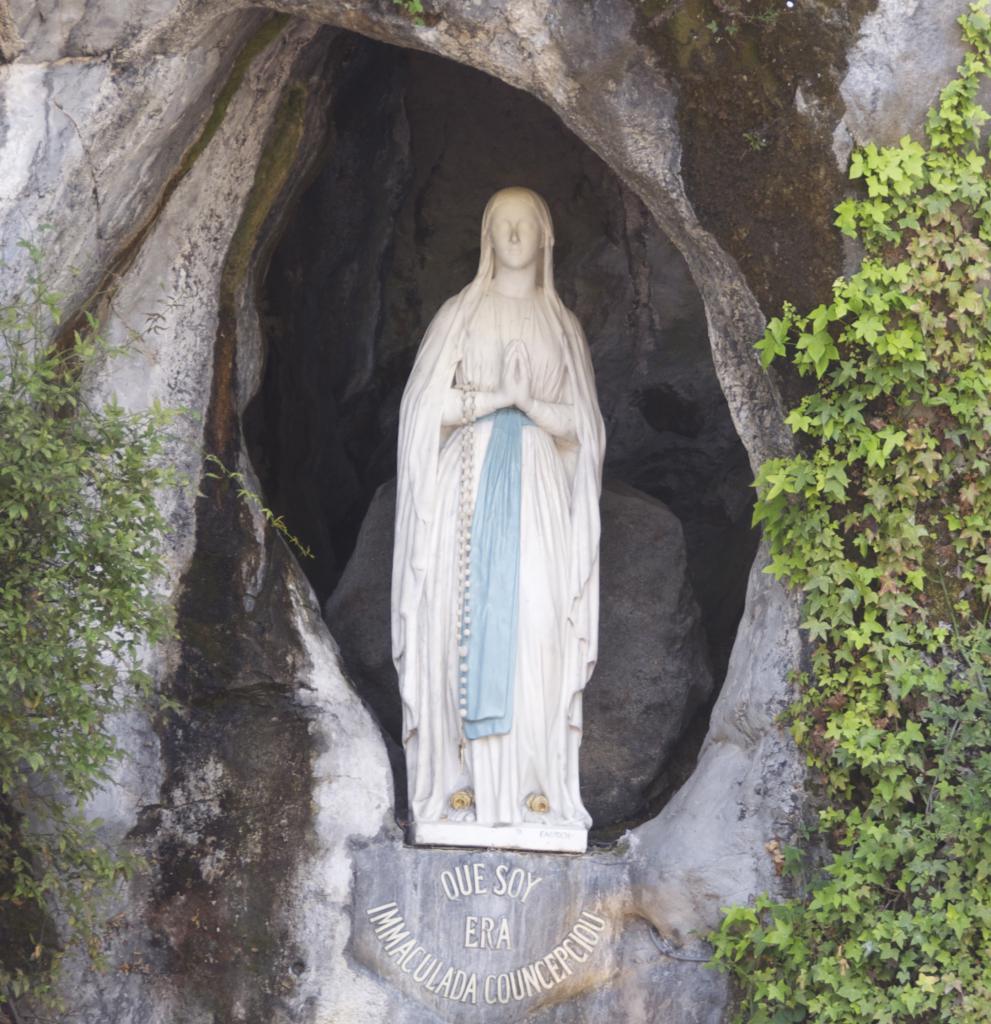By Elizabeth Uwalaka
One cannot help but always be overwhelmed by the deluge of pilgrims who descend on the Grotto in the small town in Massabielle. This year, I spent the Feast Day in Honour of Our Lady of Lourdes working in Lourdes participating in the planning days for all international Lourdes pilgrimage directors from around the world.
I became Pilgrimage Administrator for the Diocese of Westminster in May 2016 and I felt that I had been granted this new direction after a long period of dark trials, despair and anxiety. I had left the teaching profession after 17 years, not with a heavy heart, but with one which was searching for a new level of joy in my life.
As a child born in a Catholic family in West London, I followed my older siblings’ path in education and faith formation. My parents had no doubt about the value that a Catholic primary and secondary school education would add to our lives. Our late father was a head teacher, accountant and philanthropist, who liked to give us his take on stories from the Bible.
I learned the story of St Bernadette at primary school in Pottery Lane where Parish Priest Fr Wilson, and later on Fr Fullerton, Fr McTernan, and then Fr Gabriel Zsidi, would instruct us on the lives of the saints. Bernadette captivated me. The photos illustrating stories of her life included images of crutches adorning the stone flanks of the Grotto where the sick were healed. I felt a strong affinity for Bernadette and the many pilgrims to Lourdes, as some of my siblings are medical doctors. The situations doctors face on a daily basis, caring for those who come to them, have a different hue in Lourdes.
My sister volunteered as a doctor on the diocesan pilgrimage to Lourdes and found the experience, especially in the care of St Frai pilgrims, a truly memorable one. She recalled an excursion to St Savin, where, during the journey there and the Mass that afternoon, she felt a tremendous peace to be a source of help and comfort to the assisted pilgrims. Some needed support for conditions that were invisible, and others with crippling life-altering conditions which they bore with great patience.
Like our pilgrims’ lives in the UK, Bernadette’s life in Lourdes would most probably have been punctuated by frequent hospital admissions but poor Bernadette did not have a National Health Service to turn to. She must have felt so wretched at times though never had room for self-pity as it never usually helps.
One prayerful intention is that, even if a miracle should not occur, Lourdes may offer all who come to those waters, a quietness of spirit, a stillness in God’s presence and the certainty of his endless care.
And so I went on the diocesan pilgrimage to Lourdes for the first time as a praying pilgrim with my mother in 2014, as part of the group from the Parish of Our Lady of Fatima, White City. Seeing the selfless dedication with which the Redcaps and adult volunteers were helping the sick, I asked if I could lend a hand. I wanted to give something back in return for those who cared for and nurtured me so many years ago.
I couldn’t of course, not without the relevant training and clearance. I eagerly asked one of the leaders what I needed to do to join, listened attentively, and then went away with a promise to return one day as a helper.
That same night, I recall going to the Grotto very late to pray and, on entering the most sheltered part underneath the statue of Our Lady, the heavens opened and I had to stay put: a refreshing sign of the changes to come.
I returned again on the diocesan pilgrimage in 2015, with my mother and my elder sister, three mothers together having the best of times in the company of Mary Our Mother. A career change occurred for me in the spring of 2016 when I was offered the role of Pilgrimage Administrator during my final teaching post.
In the next edition, Elizabeth will give us a glimpse into the life and work of the Pilgrimage Administrator.




